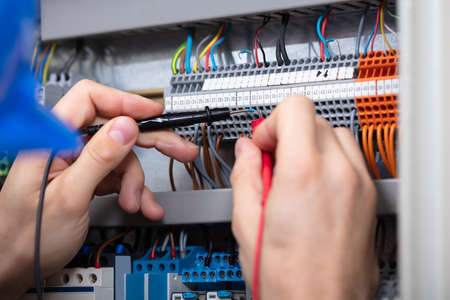In the modern world, electricity powers our homes, making our lives comfortable and convenient. However, with this great power comes the responsibility of ensuring safe and efficient domestic electrical installations. Whether you’re building a new home or renovating an existing one, understanding the basics of electrical installation is crucial. This blog aims to provide you with comprehensive insights into domestic electrical installation, emphasizing safety, efficiency, and the importance of professional expertise.
**1. ** Understanding the Basics
Before diving into the installation process, it’s essential to grasp the basics of domestic electrical systems. Learn about voltage, current, resistance, circuits, and safety devices like circuit breakers and fuses. Familiarize yourself with different types of wires and their applications. Understanding these fundamentals will enable you to make informed decisions during the installation process.
2. Hiring a Qualified Electrician
One of the most crucial steps in domestic electrical installation is hiring a qualified electrician. Electrical work is intricate and potentially dangerous, making professional expertise indispensable. Ensure that the electrician is licensed, experienced, and up-to-date with local regulations and safety standards. A qualified electrician can assess your home’s electrical needs, plan the installation, and execute the work safely and efficiently.
3. Planning Your Electrical System
Careful planning is the cornerstone of a successful electrical installation. Consider your current and future power needs. Plan the placement of outlets, switches, and lighting fixtures strategically. Adequate wiring is essential to prevent overloading circuits. Separate high-power appliances into different circuits to distribute the load evenly. Planning ahead will prevent issues and ensure your electrical system can accommodate your household’s demands.
4. Safety Measures
Safety should always be the top priority when dealing with electricity. Install ground fault circuit interrupters (GFCIs) in areas prone to moisture, such as kitchens and bathrooms. Use tamper-resistant outlets to protect children. Install smoke detectors and carbon monoxide alarms in key areas of your home. Label your circuit breakers clearly for easy identification during emergencies. Regularly inspect your electrical system for signs of wear or damage.
5. Energy Efficiency
Incorporating energy-efficient elements into your electrical installation not only reduces your carbon footprint but also saves you money in the long run. Consider installing LED lights, which consume significantly less energy than traditional bulbs. Opt for energy-efficient appliances and devices. Smart home systems can help you monitor and control your energy usage, promoting a more sustainable lifestyle.
6. Regular Maintenance
Regular maintenance is essential to ensure the longevity and efficiency of your electrical system. Schedule periodic inspections by a qualified electrician to identify and address potential issues. Replace outdated or damaged wiring promptly. Educate your family members about basic electrical safety practices to prevent accidents. By staying proactive, you can avoid costly repairs and maintain a safe living environment.


Leave a Reply